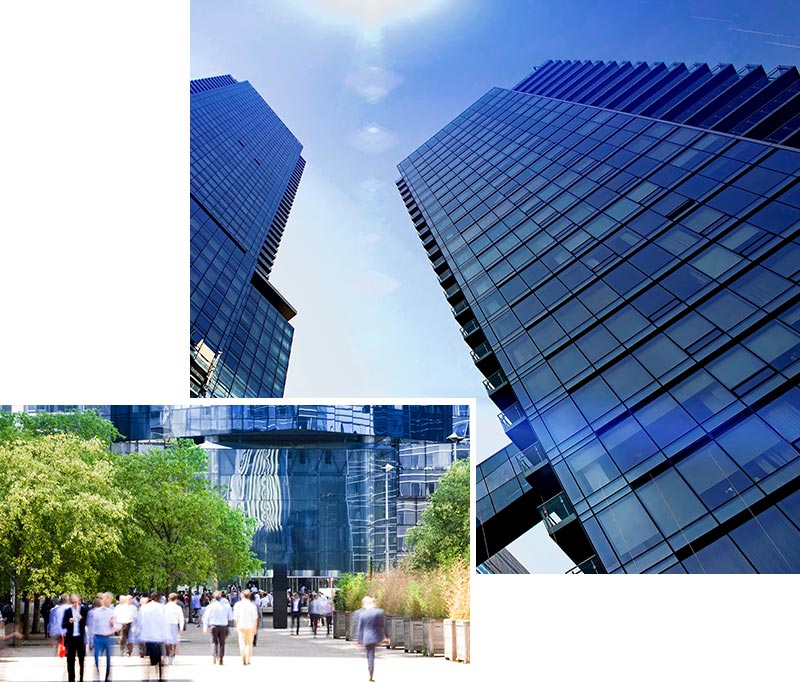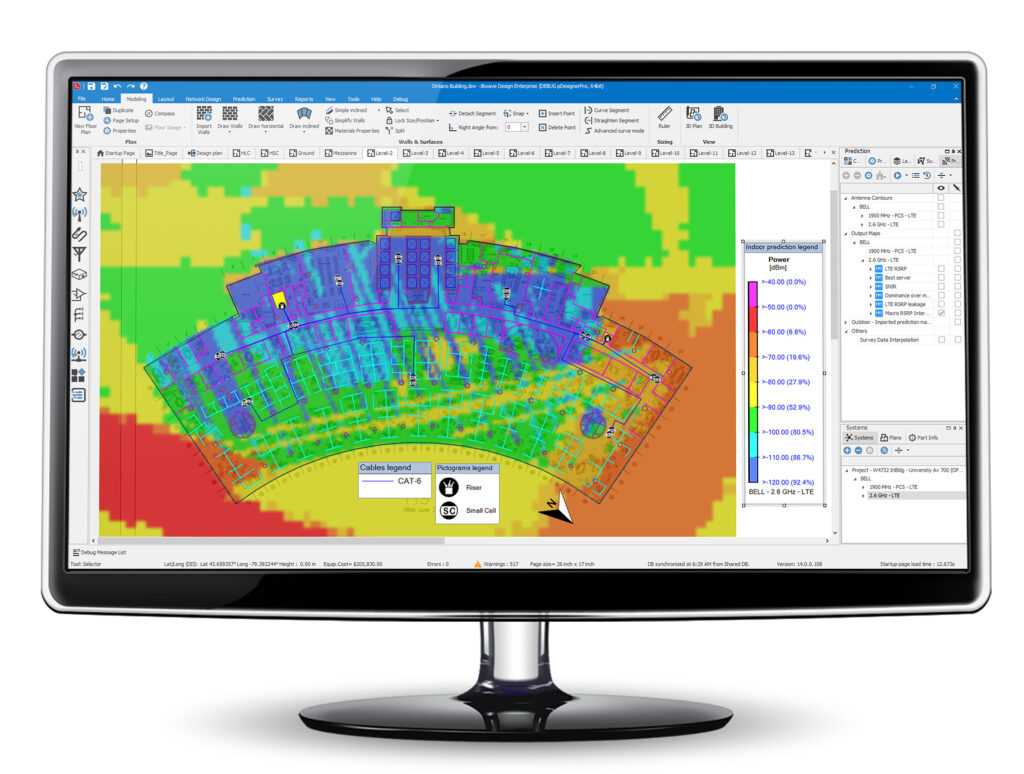Case Study: How iBwave Reach reinvents the site walk process
Learn how a North American tier-1 operator was able to design and deploy an indoor/outdoor network with accuracy while drastically reducing project time and costs.
INTRODUCTION
One of North America’s tier-1 operators approached iBwave to see if we could improve the wireless coverage in and around their corporate headquarters. They sought to improve on the existing wireless network inside their building but were also looking to extend coverage to the surrounding area of the building. More importantly, they required a solution that would not only minimize the impact on current office staff but would also significantly cut down the project’s duration.
iBwave had the answer.
Here’s how we made it happen.
THE CHALLENGES
DESIGN WHILE CONSIDERING MACRO DATA
To design an efficient and optimized indoor/outdoor network, one must take into consideration the macro signal penetrating inside the building and the interference of the indoor signal on the surrounding area. The impact has to be measured on the ground level but also on the upper floors.
AVOID LENGTHY SITE WALKS
To compile macro data of the surrounding area, site walks must be performed which tend to be time consuming and costly. Site walks often add delays to the completion of the project. They require security clearance and scheduling which can take weeks to plan.
AVOID OVERDESIGN
The are many potentially costly pitfalls that can occur when designing complex wireless networks. If the deployed network is not optimized then it may end up overdesigned or require re-optimization once construction finishes which quickly increases a project’s total cost.
THE SOLUTION
Fast-forwarding past the site walk process
Using iBwave Reach, this North American tier-1 operator was able to eliminate costly and time-consuming site walks around the high-rise building by importing macro data directly into iBwave Design. What normally took up to 3 days was completed in a matter of hours.
This is especially useful when limitations are in place to access certain buildings due to sanitary restrictions.
THE RESULTS
The new solution extends the reach of in-building network design beyond floor plans by importing outdoor macro information from third party sources. In this case, the operator used Infovista’s macro design tool Planet to import the data of the high-rise’s surrounding outdoor area. This eliminated the need to perform site walks and outdoor RF measurements, and shortened what was normally a day-long process to fifteen minutes.

Using iBwave Reach caused a ripple effect of increased productivity. The operator skipped having to perform an outdoor site walk, and also avoided having to get security clearance or fit the survey into a tight schedule.
Having the macro data on hand during the indoor design process also increased network accuracy and eliminated the risk of overdesign or having to make changes for unaccounted signal interference from external objects. With the ability to account for both the indoor and outdoor signals at the ground level and for the upper floors of the high-rise, iBwave Reach revealed itself as a true game changer.
REPRODUCING THE PROCESS
iBwave Reach simplified the project lifecycle for the operator by merging the separate high-rise and surrounding area designs into one. Instead of dividing resources and workforce between the indoor and adjacent outdoor area, the operator saved time, cut costs and increased network accuracy by completing the entire design as a single project.
We wanted to see if the benefits of iBwave Reach reported by the operator could be reproduced in a different environment, so we performed a test project at iBwave HQ. Sure enough, iBwave Reach was able to import macro data of the surrounding outdoor area using Infovista Planet in just fifteen minutes.
From there, our engineers were able to model an indoor network that properly accounted for any potential signal interference from streetlights, fences, or other surrounding objects. That removed the need to do a site walk of the surrounding area with third party tools, which not only sped up project completion, but also eliminated the cost of training designers to use different programs.
To summarize, iBwave Reach offers three key benefits when designing indoor networks with surrounding outdoor areas:
TRADITIONAL PROCESS
| Step | Time |
|---|---|
| Site Survey | 1 day |
| Site Walk for macro measurements* | 2 days |
| Post process site walk data* | 1 day |
| System design (3D + network) | 3 days |
| Import measurements in iBwave Design* | 2 hours |
| Run prediction | 2 hours |
| Acceptance site walk | 1 day |
| Create final package | 1 day |
| TOTAL | 9.5 DAYS |
iBWAVE REACH PROCESS
| Step | Time |
|---|---|
| Site Survey | 1 day |
| Run prediction in Infovista Planet* | 2 hours |
| Import macro data in iBwave Reach* | 15 mins |
| System design (3D + network) | 3 days |
| Run prediction | 2 hours |
| Acceptance site walk | 1 day |
| Create final package | 1 day |
| TOTAL | 7 DAYS |

